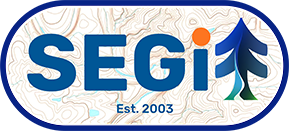- Restoration monitoring
- T&E Species Study
- Critical Habitat Evaluation
- Conservation Easement Planning
- Hydrological Monitoring
- Geographic Information Science (GIS) Mapping
Restoration monitoring is a critical component of ecosystem restoration projects aimed at assessing the effectiveness of restoration actions, tracking ecological changes, and informing adaptive management strategies.
Threatened and endangered species are those facing significant risk of extinction due to various factors, including habitat loss, pollution, climate change, overexploitation, and invasive species. Here’s an overview of threatened and endangered species and the conservation efforts aimed at their protection:
Conservation easements are legal agreements between landowners and conservation organizations or government agencies that restrict certain land uses in perpetuity to protect natural, scenic, agricultural, or cultural resources.
Hydrological monitoring involves the systematic collection, analysis, and interpretation of data related to water quantity, quality, and flow dynamics in natural and engineered systems. It plays a crucial role in understanding and managing water resources, assessing hydrological processes, and informing water-related decision-making

